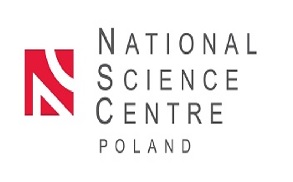
Implementation period: 2022-01-21 - 2025-01-20
Type: National
Division: The Division of Applied Geochemistry and Environmental Engineering
Mercury is an element that stands out from the others in the periodic table. It has a number of physicochemical properties that cause significant difficulties in fully understanding the interaction of this element with the surrounding environment. From the point of view of the energy industry based on fossil fuels combustion processes, a special case is the interaction between elemental mercury (Hg0) that occurs in exhaust gases and minerals/synthetic materials possessing sorbent properties. This project concerns investigation of natural, spatial aliminosilicate minerals from Heulandite and Faujasite group, their modified and synthesized-modified analogues behaviour relative to Hg0 removal from inert gas carrier stream (Argon).
Project objectives:
The project is divided into several phases to ensure the achievement of the objectives:
I. Development of prototype device SBPR-1 designed for testing solid sorbents ability to remove Hg0 from the carrier gas. The modification involve expanding the device operation with the possibility of testing desorption.
II. Modification of selected aluminosilicate minerals in order to increase their affinity to bond Hg0.
III. Innovative simultaneous synthesis-activation of the naturals phases analogues, optimization of synthesis parameters.
IV. Physicochemical characterization of spatial alimunosilicates from Heulandite and Faujasite group, , including investigation of the unit cell parameters evolution and sorbents resistance to aging process. Products will be studied using modern methods of instrumental analysis such as: Scanning Electron Microscopy, X-Ray Diffraction and Fluorescence, and Atomic Force Microscopy for the study of nucleation process. Testing of minerals and their synthesized/modified analogous on SBPR-1.
V. Testing of minerals and their synthesized/modified analogues on SBPR-1.
The results of this project may significantly expand knowledge on the physicochemical, crystallochemical features of natural, spatial aluminosilicate structures as well as their synthetic analogues. Particularly emphasized will be the subject of interactions of crystal structure active sites with Hg0 as well as changes taking place at the unit cell level, mechanisms governing nucleation and crystallization processes. Results will allow to learn the mechanisms of Hg0 bonding, which are still difficult to study, because Hg0 in contact with various ions present in sorbents may be oxidized and thus nature of sorption is changing. Knowledge about sorption mechanisms is crucial for the proper and effective modification of zeolites and their adaptation for Hg0 removal. The innovative nature of the research will be ensured through several issues:
In the future obtained results may be the foundation for attempts to produce new, effective mercury sorbents and contribute to environmental protection (in particular in the energy industry based on coal combustion processes).
Project PRELUDIUM realized with funds from National Science Centre, Poland, grant number 2021/41/N/ST5/03214.
Coordinator: Mineral and Energy Economy Research Institute, Polish Academy of Science






